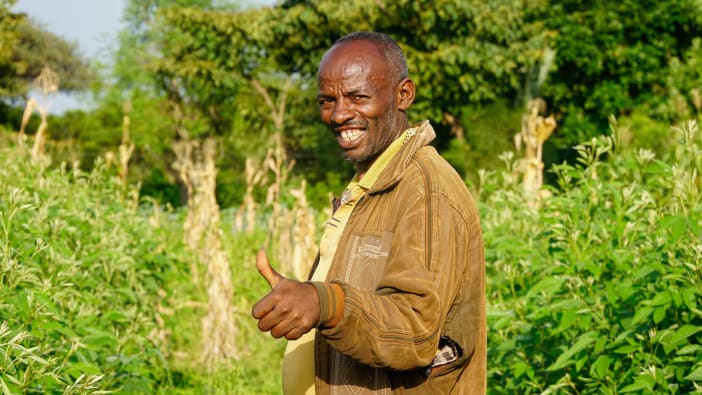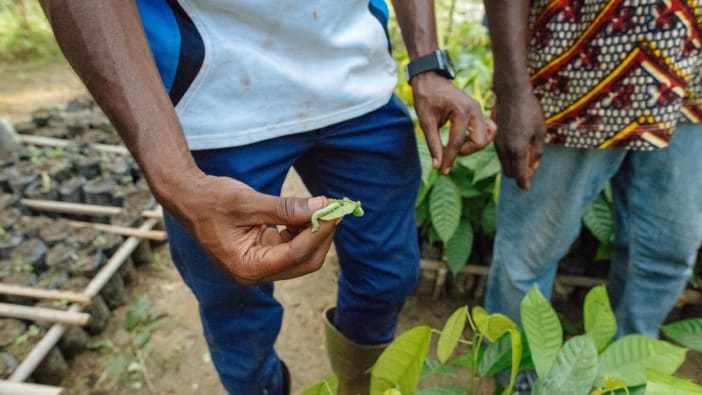by Dr Rachel Reuben.
The Neem (Azadirachta indica) is a common tree in towns and villages in India. Its distinctive leaves and sprays of small, white, sweet smelling flowers are a familiar sight in avenues and gardens.
It is sometimes called ‘Nature’s Pharmacy’, because of its many uses as a mild antibiotic, pesticide and insect repellent.
At least 35 active chemical principles have been found in its leaves, bark and seeds. The use of neem as a pesticide and the practice of cleaning one’s teeth with neem twigs have already been mentioned in Footsteps, and there are many other uses for this tree. For example, fresh green leaves mixed with grain in closed containers will keep the grain free from pests for two to three months. Farmers in Pakistan know this, and regularly plaster the inner surfaces of large storage bins for wheat with a mixture of mud and neem leaves. Neem leaves dried in books and kept at the bottom of drawers and in woollen clothing, keep away silverfish and moths.
Harvesting the seeds
The most effective of the chemicals found in neem is azadirachtin. The highest concentrations are found in the seed kernels. Neem flowers in April in South India, and the ripe fruit fall off the tree and can be collected in about July. Birds and ants eat the flesh, but leave the bitter tasting skin and seeds. These must be carefully dried or they will grow fungus.
A lot of seeds are now being bought up by industry, but there are still plenty available for local use. The seeds are crushed in either bullock powered grinders in the villages, or in mechanical grinders, to extract the oil, which has many uses – from soap making to medicinal uses. The residue after the oil is removed is known as neem cake, and is traditionally used as a fertiliser in rice fields and to control root nematode in the cardamon crop.
Neem cake
Modern science has confirmed many of the traditional beliefs about the properties of neem, and has discovered several new possibilities.
Mixing neem cake into the soil of rice fields at the rate of 250kg per hectare (1kg for a 10m x 4m plot) protects the crop from attack from sucking pests such as brown plant hopper, which has developed resistance to all the commonly used chemical insecticides. At the same time, active neem chemicals discourage the breeding of Culex mosquitoes in the rice-field water. This is important, because these mosquitoes include species which carry the virus of Japanese encephalitis, which kills large numbers of children up to the age of twelve years in rice growing areas in Southeast Asia.
An even better way of using neem is to coat urea with neem cake powder before broadcasting it in the field. The neem slows nitrifying bacteria in the soil and prolongs the useful life of urea. The result is both a higher grain yield and the control of mosquito breeding.
Neem cake must be used when fresh. Heat and moisture cause the growth of fungus, making the neem less effective. This can often be a problem because farmers may not be able to get good quality neem cake when they need it. It is also very bulky to store. An alternative is to use commercially available neem fractions that are now available in India in handy sachets. They have the advantage of being relatively stable and cheap at 2.8 US $ per hectare. Experiments carried out at our centre showed that, when mixed with urea and broadcast in the rice fields, they were just as effective as neem cake.
Grow your own
So, if you live in a part of the world where the climate favours the growing of neem, plant some trees for your own use. Put the leaves in your rice or wheat storage containers, your clothes and your books. Replace the leaves every month or two, but take care not to remove too many leaves from young trees, as this might damage their growth. Boil the leaves to get a mildly antiseptic solution which is very soothing for prickly heat and minor skin ailments. Pound the seeds yourself if there is no grinder available and plough them into your fields. Check whether commercial neem fractions are available in your area and use these when possible. The small investment involved will bring rewards of better harvests and fewer disease-bearing mosquitoes.
Dr R Reuben is the Director of the Centre for Research in Medical Entomology, PO Box 11, Chinna Chokkikulam, Madurai 625002, India.









